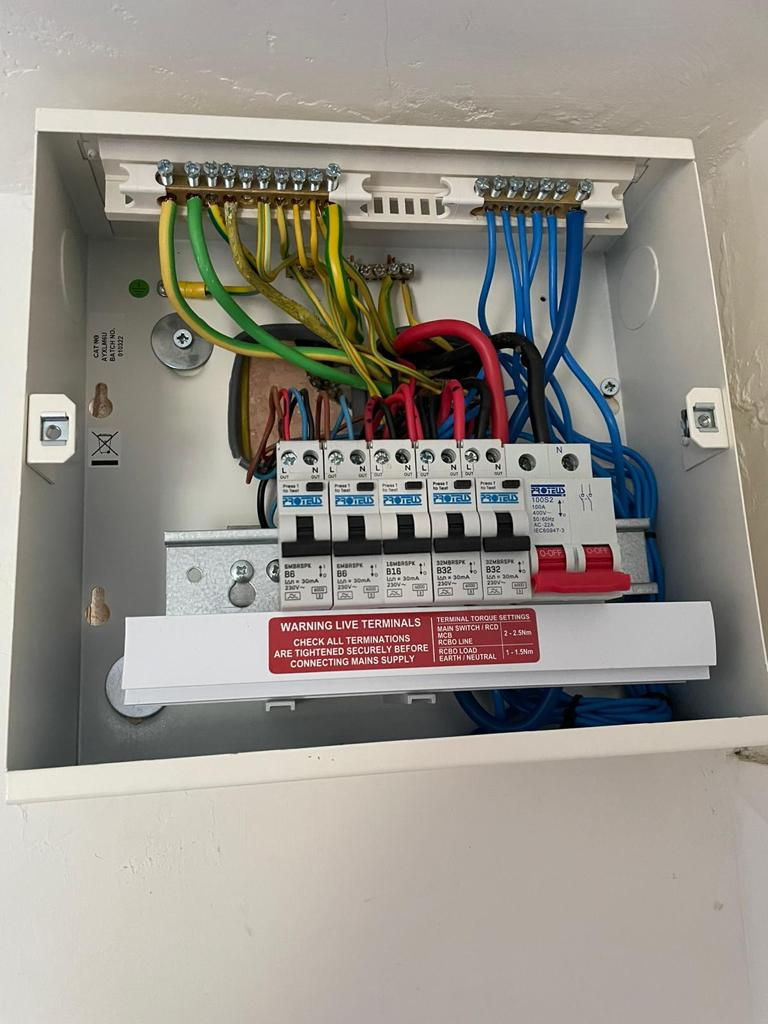Optimal Circuit Load for Safe Electrical Draw By TNS, Electrician in Chelsea
- TNS Electrical Solutions
- Nov 13, 2023
- 3 min read
Updated: Apr 25, 2024
When it comes to electrical installations, one of the critical considerations is determining the safe load or draw on a circuit. At TNS Electrical Solutions, your electrician Chelsea, we understand the importance of ensuring the safety and efficiency of electrical systems. In this article, we delve into the question: "How much draw is safe to run off of one circuit?"

Understanding Circuit Load
Defining Circuit Load
Circuit load refers to the total amount of power consumed by devices or appliances connected to a specific electrical circuit. This load is measured in watts and is crucial in preventing overloads that can lead to electrical hazards.
Factors Influencing Circuit Load
Several factors influence the safe load on a circuit:
Circuit Capacity: The maximum load a circuit can handle without tripping the circuit breaker.
Wire Gauge: The thickness of the wire affects its capacity to carry current.
Appliance Requirements: Different appliances have varying power requirements, impacting the overall circuit load.

Determining Safe Load for Circuits
Circuit Capacity and Breaker Ratings
It's essential to know the capacity of your circuit, typically indicated by the breaker rating. This rating represents the maximum load the circuit can handle without risking overheating.
Applying the 80% Rule
To ensure safety, experts recommend operating circuits at no more than 80% of their capacity. This additional buffer helps prevent overheating and reduces the risk of electrical fires.
Calculating Safe Load
To calculate the safe load on a circuit, use the formula:
Safe Load=Circuit Capacity×0.8Safe Load=Circuit Capacity×0.8
Practical Examples
Residential Wiring
In a residential setting, understanding safe circuit loads is crucial. For instance, if a circuit has a breaker rating of 20 amps, the safe load would be 20 amps×0.8=16 amps20amps×0.8=16amps.
Kitchen Appliances
Kitchen circuits often power multiple high-demand appliances. Knowing the safe load helps prevent tripped breakers and ensures uninterrupted power.

TNS Electrical Solutions Recommendations
Professional Assessment
For precise assessments and to ensure compliance with electrical codes, it's advisable to seek the expertise of a qualified electrician. At TNS Electrical Solutions, your Chelsea electrician, we offer professional assessments to determine the optimal load for your circuits.
Upgrading Circuits
If you frequently experience tripped breakers or plan to add more appliances, consider upgrading your circuits. This involves installing higher capacity breakers and, if necessary, thicker gauge wiring.
FAQs on Safe Circuit Load by TNS Electrical Solutions
1. What is a safe load for a residential electrical circuit? A safe load for a residential electrical circuit is typically 80% of the circuit's capacity to prevent overloads and ensure safety. For example, if a circuit is rated at 20 amps, the safe load would be 16 amps (20 amps x 0.8). This 80% rule helps maintain a safety buffer and reduces the risk of tripping circuit breakers or causing electrical fires.
2. How do I calculate the safe load for my home's electrical circuits? To calculate the safe load of an electrical circuit, first identify the circuit breaker's amp rating. Multiply this number by 0.8 (80%) to determine the maximum safe load in amps. For instance, a 15-amp circuit should not exceed a load of 12 amps. This calculation helps ensure that the circuit operates safely without nearing its maximum capacity, which can lead to overheating and electrical hazards.
3. When should I consider upgrading my home's electrical circuits? Consider upgrading your home's electrical circuits if you frequently experience tripped circuit breakers, notice dimming or flickering lights, or plan to add more appliances that may exceed the current circuits' capacity. Upgrading may involve installing higher capacity breakers and updating wiring to accommodate increased loads safely. It's advisable to consult with a professional electrician, like TNS Electrical Solutions, to assess your specific needs and ensure that any upgrades comply with local electrical codes and standards.

Contact Us For Expert Tips or Help - Trusted Chelsea Electrician
In the realm of electrical safety, understanding the safe load on a circuit is paramount. By adhering to the 80% rule and considering various influencing factors, you can prevent electrical hazards and ensure the longevity of your electrical system.
Remember, safety should always be the priority when dealing with electrical installations.
For more free information, contact our electrician in London today.

Comments